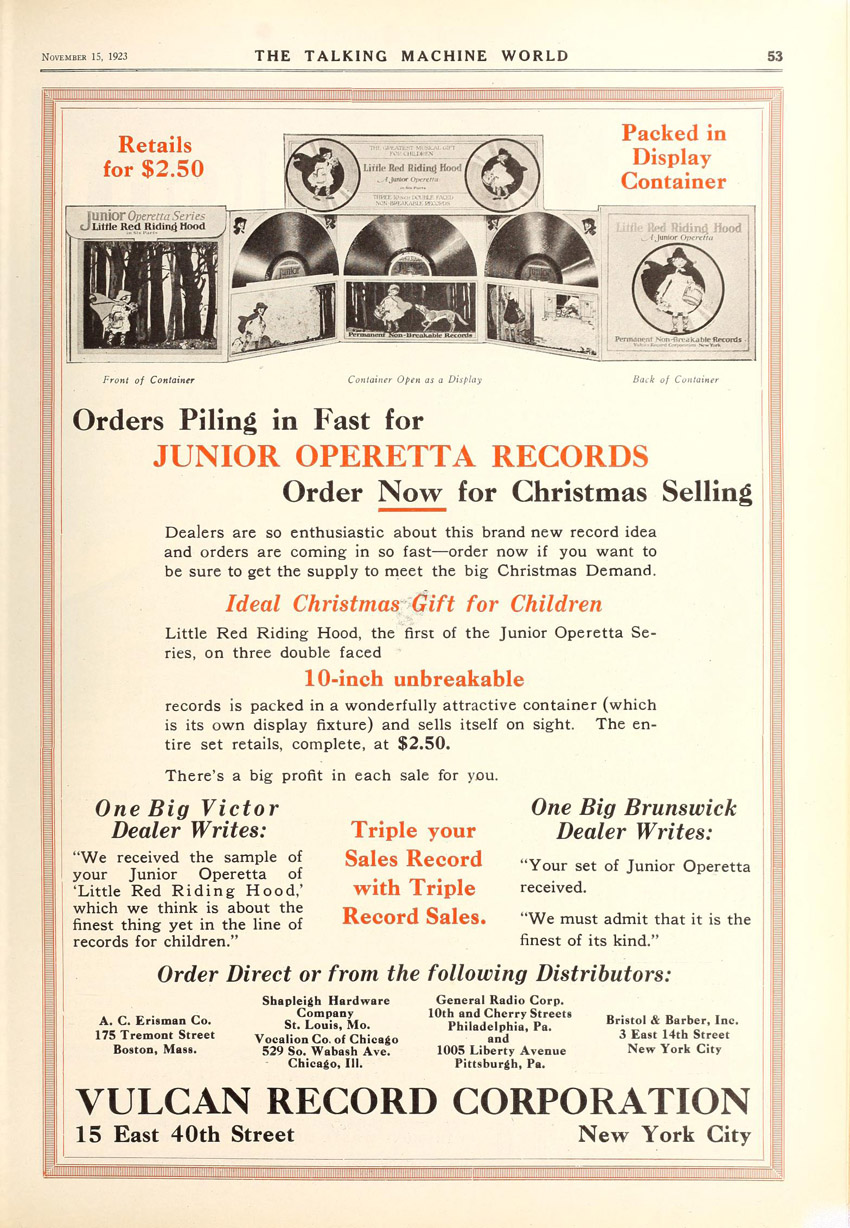|
Record Albums
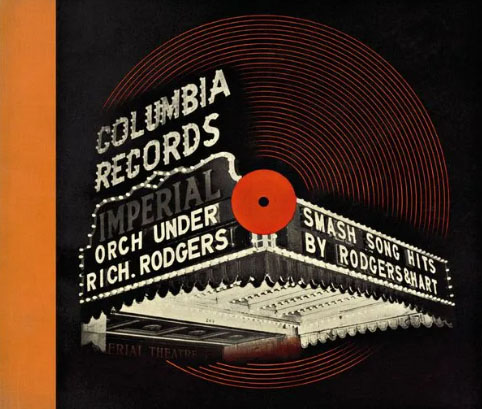
A Brief Overview of Record
Albums and Album Covers
Record Albums and
Album Covers
Album - "A phonograph
record or set of records containing a collection of musical selections
or sounds usually stored in a book designed to hold records or
in its own packaging for a single record." See Dictionary
of Phonographia.
There were no 'albums' issued by
record companies for the early disc records which only had one
recorded side. Paul Charosh reported "the existence of
a single...2-sided disc, with both sides originally recorded in
Nov 1894: 365, “Punchinello,” sung by Grace McCulloch"
But two-sided records in the United States were slow to be marketed
and the Columbia Phonograph Company finally took the lead in advertising
their double-sided records in 1908. (Koenigsberg, Allen, "Both
Sides Then - The
Strange Origins of the Double Sided Disc Record,"
The Sound Box, December 2010).

Collier's magazine, October
1908
Whether the records were recorded
on one or both sides, the packaging for early disc records was paper
sleeves for decades.
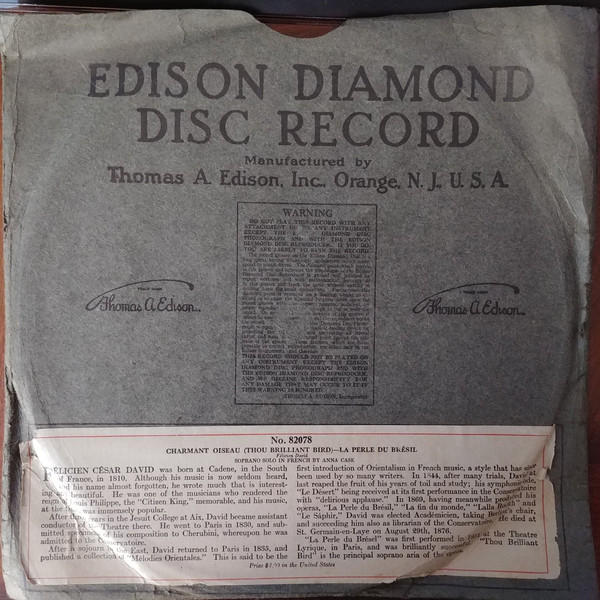
Edison Diamond Disc
Record paper sleeve, No. 82078 (1915)
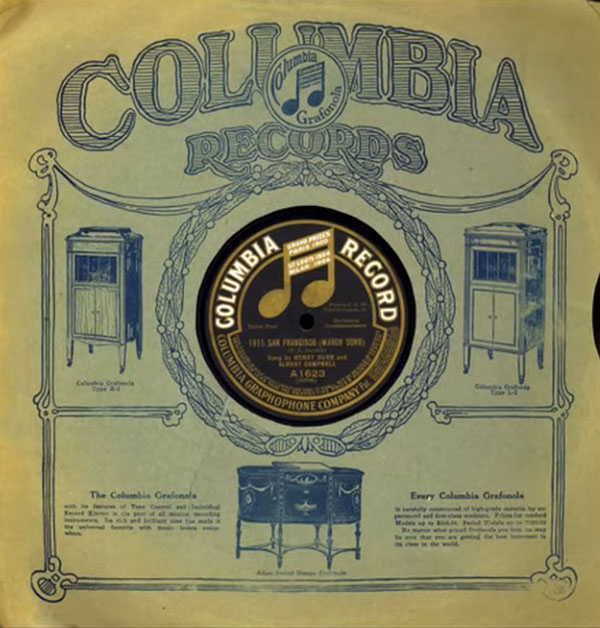
Columbia Record paper
sleeve (1915)
There were some collections
of records which were packaged pre-1940 in their own 'albums' such
as Walter Camp's 1923 "Daily Dozen" Record Set.

Walter Camp's Health
Builder Record Sets, The Talking Machine World, November
15, 1923
In homes disc records could be stored
in purchased "albums" that had multiple pages with 'sleeves' to
hold the records. These early record albums resembled photograph
albums -- not coincidentally since phonograph records captured sound
and photographs captured light and both were saving something previously
ephemeral. These early phonograph
albums were usually undecorated and sometimes stamped on the spine
with a letter of the alphabet to help organize multiple albums in
the record cabinet.
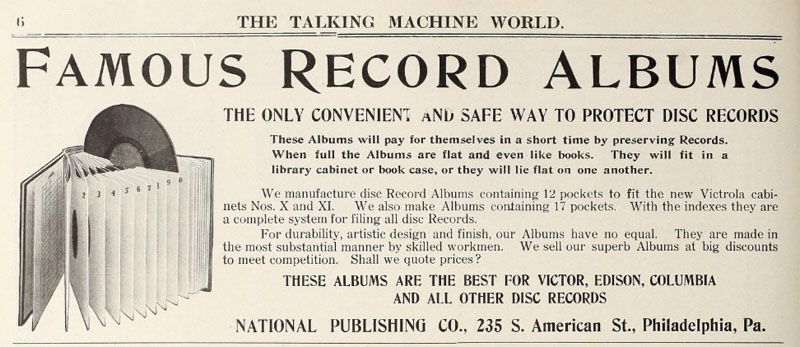
78 rpm album May
15, 1915, The Talking Machine World
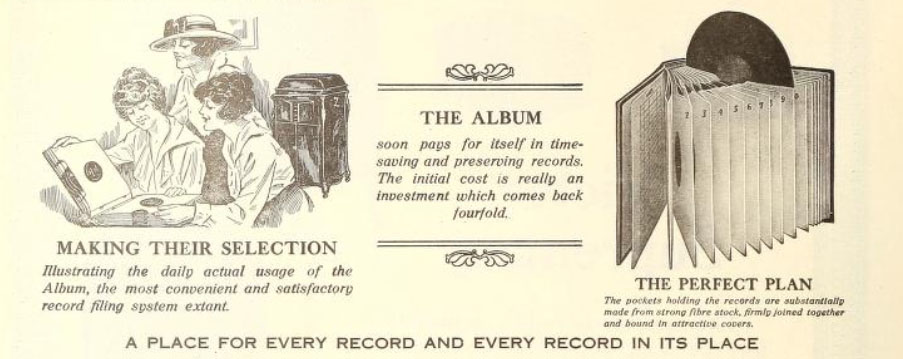
The National Publishing
Co., February 1919, The Talking Machine World
Another type of record storing
album pre-1940 are the Bubble Books published by Harper &
Brothers which contained children's stories on Columbia records.
Described in their ads as "Music, Pictures, Songs, All
in One," its book-like cover had written words and pictures
of the story on the sleeved pages of the book which was also
acting as an album for its records. For a history of these books
see the website Little
Wonder Records and Bubble Books and "Little Wonder
Records and Bubble Books" by Tim Brooks and Merle Sprinzen,
Mainspring Press, Denver, Colorado (2011).

The Funny Froggy
Bubble Book, 1919 (FP-1179)
Junior Operetta
Records - Little Red Riding Hood in an "attractive display
container."
The Talking Machine
World, November 15, 1923. The three records are stored in a 3-sleeved
folder which is described as a record container (to also be used by
the dealer as its own "display fixture").
Record album art began in the 1940's
and often featured photographs and graphic art related to the recording
artist or illustrated a theme of the album.
"An album cover is the front
of the packaging of a commercially released audio recording
product, or album... In 1938, Columbia Records hired Alex Steinweiss
as its first art director. He is credited with inventing the
concept of album covers and cover art, replacing the plain covers
used before. After his initial efforts at Columbia, other record
companies followed his lead. By the late 1940s, record albums
for all the major companies featured their own colorful paper
covers in both 10- and 12-inch sizes. Some featured reproductions
of classic art while others utilized original designs."
Wikipedia
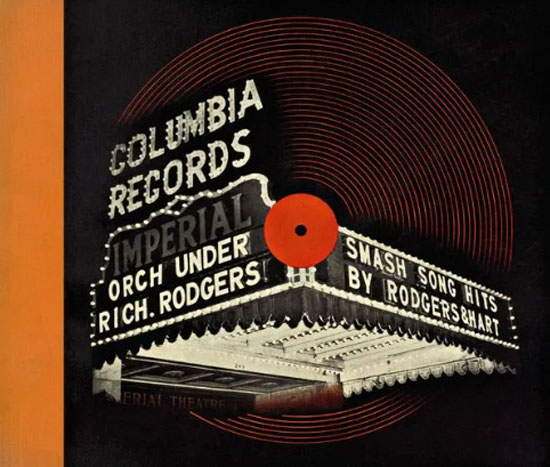
Smash Song Hits by Rogers &
Hart, 1940 Shellac 12" Mono 78 rpm Record, Columbia / C-11.
The introduction of long-playing
(LP) records by Columbia Records in 1948 which could play multiple
songs on each side continued to be called albums (even though
they were no longer like their prototype photograph album) since
it was still a collection of music.
The cover art on record albums can
attract attention, can make a first impression to the consumer
about the artist/music, or can provide artistic associations with
the music and the record inside the album, the artist(s) or other
records of the artist. At minimum, the album packages the record,
gives the record a place to be stored when not being played and
provides enough information about what's inside that the consumer
can distinguish it from other albums.
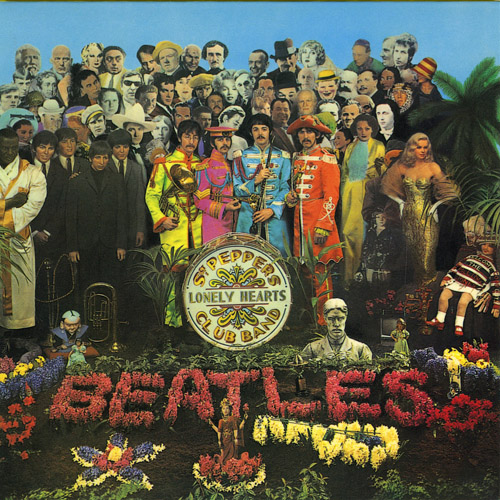
Beatles' LP Album Cover, 1967
Record albums have an important
place in the history of recorded music. Likewise, record album
covers are an art form of music culture.
See Wikipedia's Album
cover for an overview with a broader scope than record cover
art as it's noted that the "term can refer to either the
printed paperboard covers...and, increasingly, the primary image
accompanying a digital download of the album, or of its individual
tracks." (Ibid.)
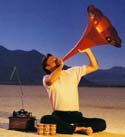
Phonographia
DB Last Updated 8/28/2024
|
